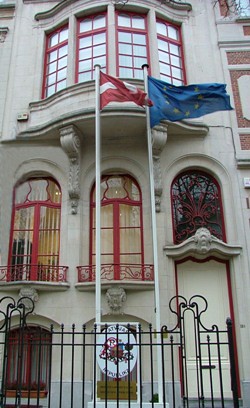Two of the six pieces of legislation are relevant for this, the Ferreira regulation and the Haglund regulation. The Ferreira regulation allows for the establishment of "an alert mechanism for early detection of emerging macroeconomic imbalances" within the European Commission, but under consultation of the European Systemic Risk Board. This mechanism "should be based on use of an indicative and transparent scoreboard comprising indicative thresholds, combined with economic judgment" (see the exact rules for the scoreboard in the regulation).
The aim of the two regulations is among others to bring the macroeconomic policies of the 17 different Eurozone economies closer together. While one country lowers taxes, establishes a minimum wage and gives out subsidies to make people spend more, it should be safeguarded that its neighbor doesn't raise taxes to keep its purchasing power at home (Germany has been pretty good at that over the last decade, and France was rather angry about it).
While the structural funds of the EU (European Regional Development Fund, European Social Fund, Cohesion Fund and two others) are not directly related to macroeconomic policy of the member state governments, they also have an important role in bringing European economies closer together. The Commission has just published its proposal for the structural funds 2014-20, which are expected to have a volume of 336 billion EUR. Three different types of regions are to profit from the funds, namely
- less developed regions, whose GDP is below 75% of the Union average (this will continue to be the top priority for the policy)
- transition regions, whose GDP is between 75% and 90% of the EU 27 average
- more developed regions, whose GDP per capita is above 90% of the average.
|
|
|---|
Update (10/10/11): The Commission's 6 October proposal does incorporate a suspension of cohesion funds if macroeconomic criteria are not met. Read more here.


Peter Ramsden writes
ReplyDeletethis is a version the old chestnut about why should regions in rich countries (the net contributors) receive money from the Structural Funds. North Rhine Westphalia has a population of 18million (several times the population of Latvia) and despite some economic success faces major problems of integrating migrants, modernising and diversifying its economy from traditional industries and many cities with disadvantaged neighbourhoods. In fact much like Northern England, Scotland or Wales all of which also receive Structural Funds while being in a wealthy Member State. The policy concentrates the vast majority of resources - over two thirds in convergence regions where the GDP per capita is below 75% of the EU average. Most of this money is now going East, although Greece and other parts of Southern Europe continue as recipients.
Europe needs policies that help to make it more competitive, inclusive and sustainable. This applies as much in Inner London where I live as it does in Latvia.
Despite the mess ups by many National governments, regions have made good things happen using the Structural Funds. North Rhine Westphalia is the leading region in Europe in tackling disadvantage. Something we were once good at.
Dear Peter,
ReplyDeletethank you for your comment. I don't dispute that the money is put to good use in wealthy regions (and I hope no EU funds were involved here).
Yet, in my view, to reach the goal of macroeconomic stability, the structural funds should be in tune with the alert mechanism for macroeconomic imbalances. This would put pressure upon the national governments to keep their policies under control and to make them coherent with the regions' policies. A country whose national government decides to beggar its neighbors, should not only face a penalty to its national budget but also cuts in regional funding.
My argument with North-Rhine Westphalia concerns the fact that it can announce a victory already on the day that the Commission makes its structural fund proposal. It makes me wonder how much of the attribution of funds follows economic reasoning and how much follows pure political negotiation. Some German regional representations have more resources than other member states' embassies; the representative system is evidently biased towards those who can afford the cost of lobbying (the NRW press release already announces "tough negotiations" on the distributions of the funds). I would like to see that the room for political tug of war be limited to a minimum and that the attribution of funds would chiefly respond to the goals of macroeconomic stability.